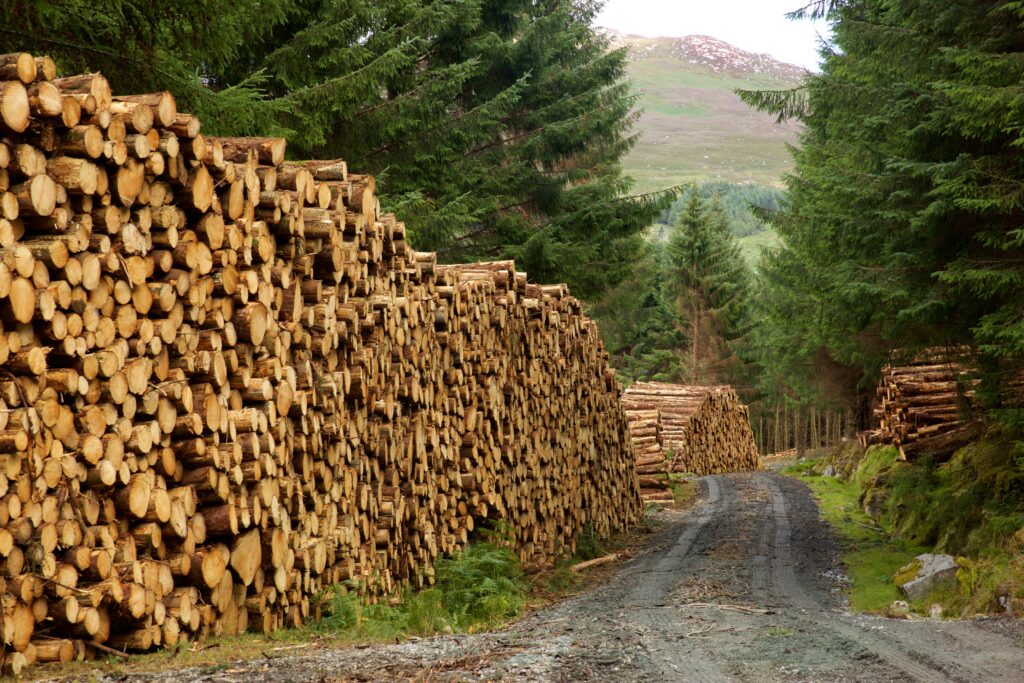A webinar has heard how a significant increase in tree planting could sequester 100 million tonnes of carbon dioxide (CO2) by 2050.
Prof. John Fitzgerald, who is a member of the Climate Change Advisory Council, was addressing the online gathering today (Thursday, April 14) focused on the role of timber in helping to tackle climate change.
The event was organised by Ibec’s Forest Industries Ireland (FII), in conjunction with the Royal Institute of the Architects of Ireland (RIAI).
Carbon storage
Prof. Fitzgerald said that a successful forestry policy, delivering a significant increase in new planting over the coming 30 years, could sequester 100 million tonnes of carbon dioxide (CO2) by 2050.
He explained that at the price the government recommends for CO2, this carbon fixed in additional forestry would be worth €26.5 billion to the country – before the value of the timber produced is included.
The Trinity College Dublin (TCD) academic acknowledged that this would require agricultural land. It would mean that a maximum of 20% of land cover would be under forestry.
He said that the current forestry licensing system is not fit for purpose and should be replaced with a regulation-based system to provide certainty to the sector and reduce investor risk.
“At the moment, the hold up in the licensing system is dramatically impacting on forestry.”
Fitzgerald outlined that if tree planting levels do not increase now, Ireland will not meet its 2050 climate targets.
He said that the ability to harvest trees is an essential part of the sector, adding that he would be totally against any restrictions being placed on harvesting.

Prof. Fitzgerald said that the major advantage of forestry when it comes to emissions is the carbon storage it provides. The length of time which carbon is ‘fixed’ can be extended depending on how wood is used.
“If you build something with it and that building lasts 50 years, the carbon fixed in that timber is not released into the atmosphere.”
Timber frame building can be faster and cheaper than traditional house building and could help with the housing crisis, Fitzgerald stated.
“We also need to look at extending the use of timber in other building,” he added.
Prof. Fitzgerald noted that substituting wood for cement would reduce annual emissions by 3.2 million tonnes.
He said that the government’s Housing For All strategy had failed to address the issue of changing building technology and a greater use of timber in building.
Timber use
Architect Robert Bourke said there is a growing consciousness in his profession to increase the use of timber in buildings.
“There needs to be a system change in building methods and there needs to be a regulation of embodied carbon in buildings,” he stated.
FII director Mark McAuley also told the webinar that “we need to re-energise our tree planting”, stating that just 2,000ac of new forest was planted last year.
He added that engagement with the farming community and others is needed to promote the environmental benefit of planting trees.
“This year, Irish timber products will displace 3.4 million tonnes of CO2 emissions from other products. This is replicated around the world where timber is used instead of carbon intensive products.
“In Ireland, we lag behind in how much we use timber in our housing and building stock.
“We need to transition to more timber buildings and take advantage of the great national resource we have in the forests we have grown and the timber we produce,” McAuley concluded.
